Pablo Piantanida
Collaborative Rational Speech Act: Pragmatic Reasoning for Multi-Turn Dialog
Jul 18, 2025Abstract:As AI systems take on collaborative roles, they must reason about shared goals and beliefs-not just generate fluent language. The Rational Speech Act (RSA) framework offers a principled approach to pragmatic reasoning, but existing extensions face challenges in scaling to multi-turn, collaborative scenarios. In this paper, we introduce Collaborative Rational Speech Act (CRSA), an information-theoretic (IT) extension of RSA that models multi-turn dialog by optimizing a gain function adapted from rate-distortion theory. This gain is an extension of the gain model that is maximized in the original RSA model but takes into account the scenario in which both agents in a conversation have private information and produce utterances conditioned on the dialog. We demonstrate the effectiveness of CRSA on referential games and template-based doctor-patient dialogs in the medical domain. Empirical results show that CRSA yields more consistent, interpretable, and collaborative behavior than existing baselines-paving the way for more pragmatic and socially aware language agents.
THUNDER: Tile-level Histopathology image UNDERstanding benchmark
Jul 10, 2025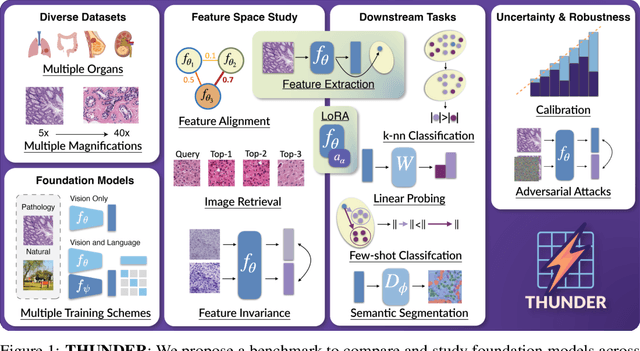
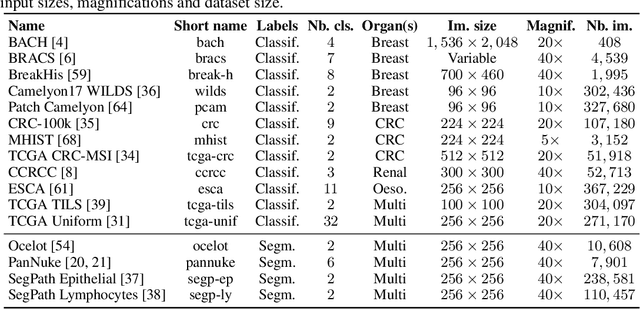

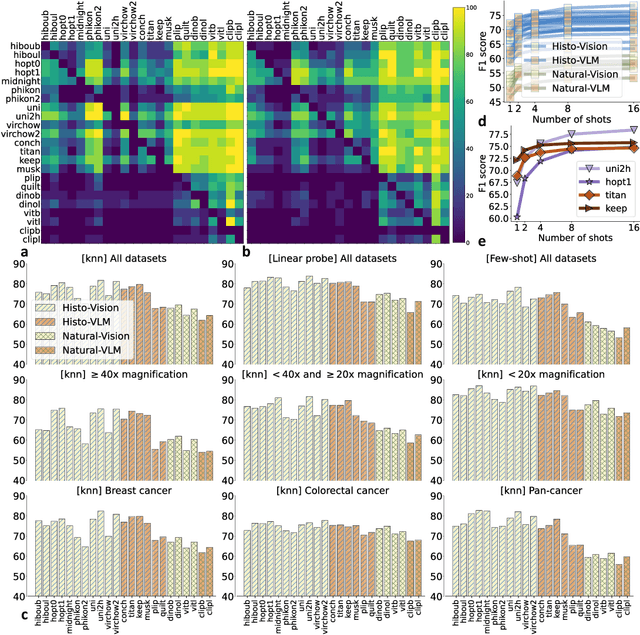
Abstract:Progress in a research field can be hard to assess, in particular when many concurrent methods are proposed in a short period of time. This is the case in digital pathology, where many foundation models have been released recently to serve as feature extractors for tile-level images, being used in a variety of downstream tasks, both for tile- and slide-level problems. Benchmarking available methods then becomes paramount to get a clearer view of the research landscape. In particular, in critical domains such as healthcare, a benchmark should not only focus on evaluating downstream performance, but also provide insights about the main differences between methods, and importantly, further consider uncertainty and robustness to ensure a reliable usage of proposed models. For these reasons, we introduce THUNDER, a tile-level benchmark for digital pathology foundation models, allowing for efficient comparison of many models on diverse datasets with a series of downstream tasks, studying their feature spaces and assessing the robustness and uncertainty of predictions informed by their embeddings. THUNDER is a fast, easy-to-use, dynamic benchmark that can already support a large variety of state-of-the-art foundation, as well as local user-defined models for direct tile-based comparison. In this paper, we provide a comprehensive comparison of 23 foundation models on 16 different datasets covering diverse tasks, feature analysis, and robustness. The code for THUNDER is publicly available at https://github.com/MICS-Lab/thunder.
$(RSA)^2$: A Rhetorical-Strategy-Aware Rational Speech Act Framework for Figurative Language Understanding
Jun 10, 2025Abstract:Figurative language (e.g., irony, hyperbole, understatement) is ubiquitous in human communication, resulting in utterances where the literal and the intended meanings do not match. The Rational Speech Act (RSA) framework, which explicitly models speaker intentions, is the most widespread theory of probabilistic pragmatics, but existing implementations are either unable to account for figurative expressions or require modeling the implicit motivations for using figurative language (e.g., to express joy or annoyance) in a setting-specific way. In this paper, we introduce the Rhetorical-Strategy-Aware RSA $(RSA)^2$ framework which models figurative language use by considering a speaker's employed rhetorical strategy. We show that $(RSA)^2$ enables human-compatible interpretations of non-literal utterances without modeling a speaker's motivations for being non-literal. Combined with LLMs, it achieves state-of-the-art performance on the ironic split of PragMega+, a new irony interpretation dataset introduced in this study.
Rational Retrieval Acts: Leveraging Pragmatic Reasoning to Improve Sparse Retrieval
May 06, 2025Abstract:Current sparse neural information retrieval (IR) methods, and to a lesser extent more traditional models such as BM25, do not take into account the document collection and the complex interplay between different term weights when representing a single document. In this paper, we show how the Rational Speech Acts (RSA), a linguistics framework used to minimize the number of features to be communicated when identifying an object in a set, can be adapted to the IR case -- and in particular to the high number of potential features (here, tokens). RSA dynamically modulates token-document interactions by considering the influence of other documents in the dataset, better contrasting document representations. Experiments show that incorporating RSA consistently improves multiple sparse retrieval models and achieves state-of-the-art performance on out-of-domain datasets from the BEIR benchmark. https://github.com/arthur-75/Rational-Retrieval-Acts
Statistical Deficiency for Task Inclusion Estimation
Mar 07, 2025Abstract:Tasks are central in machine learning, as they are the most natural objects to assess the capabilities of current models. The trend is to build general models able to address any task. Even though transfer learning and multitask learning try to leverage the underlying task space, no well-founded tools are available to study its structure. This study proposes a theoretically grounded setup to define the notion of task and to compute the {\bf inclusion} between two tasks from a statistical deficiency point of view. We propose a tractable proxy as information sufficiency to estimate the degree of inclusion between tasks, show its soundness on synthetic data, and use it to reconstruct empirically the classic NLP pipeline.
Membership Inference Risks in Quantized Models: A Theoretical and Empirical Study
Feb 10, 2025



Abstract:Quantizing machine learning models has demonstrated its effectiveness in lowering memory and inference costs while maintaining performance levels comparable to the original models. In this work, we investigate the impact of quantization procedures on the privacy of data-driven models, specifically focusing on their vulnerability to membership inference attacks. We derive an asymptotic theoretical analysis of Membership Inference Security (MIS), characterizing the privacy implications of quantized algorithm weights against the most powerful (and possibly unknown) attacks. Building on these theoretical insights, we propose a novel methodology to empirically assess and rank the privacy levels of various quantization procedures. Using synthetic datasets, we demonstrate the effectiveness of our approach in assessing the MIS of different quantizers. Furthermore, we explore the trade-off between privacy and performance using real-world data and models in the context of molecular modeling.
BayesAdapter: enhanced uncertainty estimation in CLIP few-shot adaptation
Dec 12, 2024



Abstract:The emergence of large pre-trained vision-language models (VLMs) represents a paradigm shift in machine learning, with unprecedented results in a broad span of visual recognition tasks. CLIP, one of the most popular VLMs, has exhibited remarkable zero-shot and transfer learning capabilities in classification. To transfer CLIP to downstream tasks, adapters constitute a parameter-efficient approach that avoids backpropagation through the large model (unlike related prompt learning methods). However, CLIP adapters have been developed to target discriminative performance, and the quality of their uncertainty estimates has been overlooked. In this work we show that the discriminative performance of state-of-the-art CLIP adapters does not always correlate with their uncertainty estimation capabilities, which are essential for a safe deployment in real-world scenarios. We also demonstrate that one of such adapters is obtained through MAP inference from a more general probabilistic framework. Based on this observation we introduce BayesAdapter, which leverages Bayesian inference to estimate a full probability distribution instead of a single point, better capturing the variability inherent in the parameter space. In a comprehensive empirical evaluation we show that our approach obtains high quality uncertainty estimates in the predictions, standing out in calibration and selective classification. Our code is publicly available at: https://github.com/pablomorales92/BayesAdapter.
Zero-Shot Machine-Generated Text Detection Using Mixture of Large Language Models
Sep 11, 2024



Abstract:The dissemination of Large Language Models (LLMs), trained at scale, and endowed with powerful text-generating abilities has vastly increased the threats posed by generative AI technologies by reducing the cost of producing harmful, toxic, faked or forged content. In response, various proposals have been made to automatically discriminate artificially generated from human-written texts, typically framing the problem as a classification problem. Most approaches evaluate an input document by a well-chosen detector LLM, assuming that low-perplexity scores reliably signal machine-made content. As using one single detector can induce brittleness of performance, we instead consider several and derive a new, theoretically grounded approach to combine their respective strengths. Our experiments, using a variety of generator LLMs, suggest that our method effectively increases the robustness of detection.
Combine and Conquer: A Meta-Analysis on Data Shift and Out-of-Distribution Detection
Jun 23, 2024
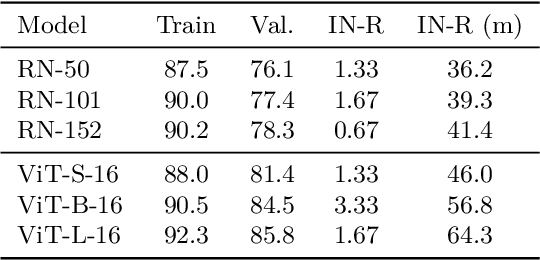

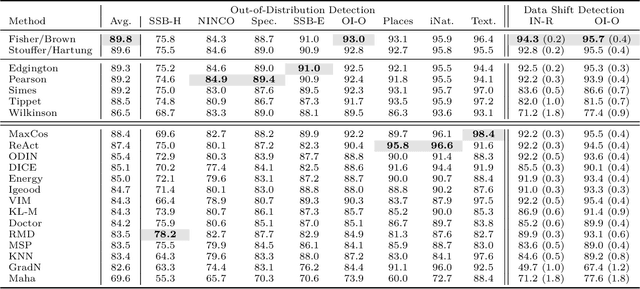
Abstract:This paper introduces a universal approach to seamlessly combine out-of-distribution (OOD) detection scores. These scores encompass a wide range of techniques that leverage the self-confidence of deep learning models and the anomalous behavior of features in the latent space. Not surprisingly, combining such a varied population using simple statistics proves inadequate. To overcome this challenge, we propose a quantile normalization to map these scores into p-values, effectively framing the problem into a multi-variate hypothesis test. Then, we combine these tests using established meta-analysis tools, resulting in a more effective detector with consolidated decision boundaries. Furthermore, we create a probabilistic interpretable criterion by mapping the final statistics into a distribution with known parameters. Through empirical investigation, we explore different types of shifts, each exerting varying degrees of impact on data. Our results demonstrate that our approach significantly improves overall robustness and performance across diverse OOD detection scenarios. Notably, our framework is easily extensible for future developments in detection scores and stands as the first to combine decision boundaries in this context. The code and artifacts associated with this work are publicly available\footnote{\url{https://github.com/edadaltocg/detectors}}.
Predicting Probabilities of Error to Combine Quantization and Early Exiting: QuEE
Jun 20, 2024
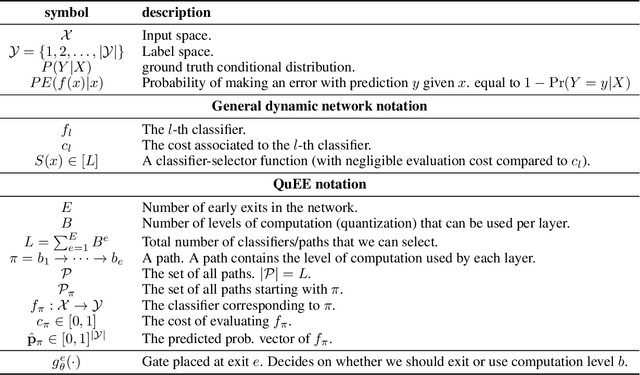
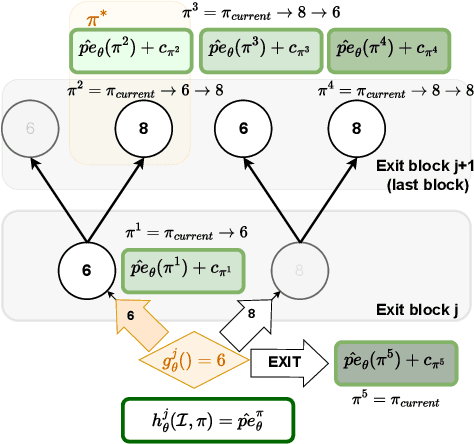

Abstract:Machine learning models can solve complex tasks but often require significant computational resources during inference. This has led to the development of various post-training computation reduction methods that tackle this issue in different ways, such as quantization which reduces the precision of weights and arithmetic operations, and dynamic networks which adapt computation to the sample at hand. In this work, we propose a more general dynamic network that can combine both quantization and early exit dynamic network: QuEE. Our algorithm can be seen as a form of soft early exiting or input-dependent compression. Rather than a binary decision between exiting or continuing, we introduce the possibility of continuing with reduced computation. This complicates the traditionally considered early exiting problem, which we solve through a principled formulation. The crucial factor of our approach is accurate prediction of the potential accuracy improvement achievable through further computation. We demonstrate the effectiveness of our method through empirical evaluation, as well as exploring the conditions for its success on 4 classification datasets.
 Add to Chrome
Add to Chrome Add to Firefox
Add to Firefox Add to Edge
Add to Edge